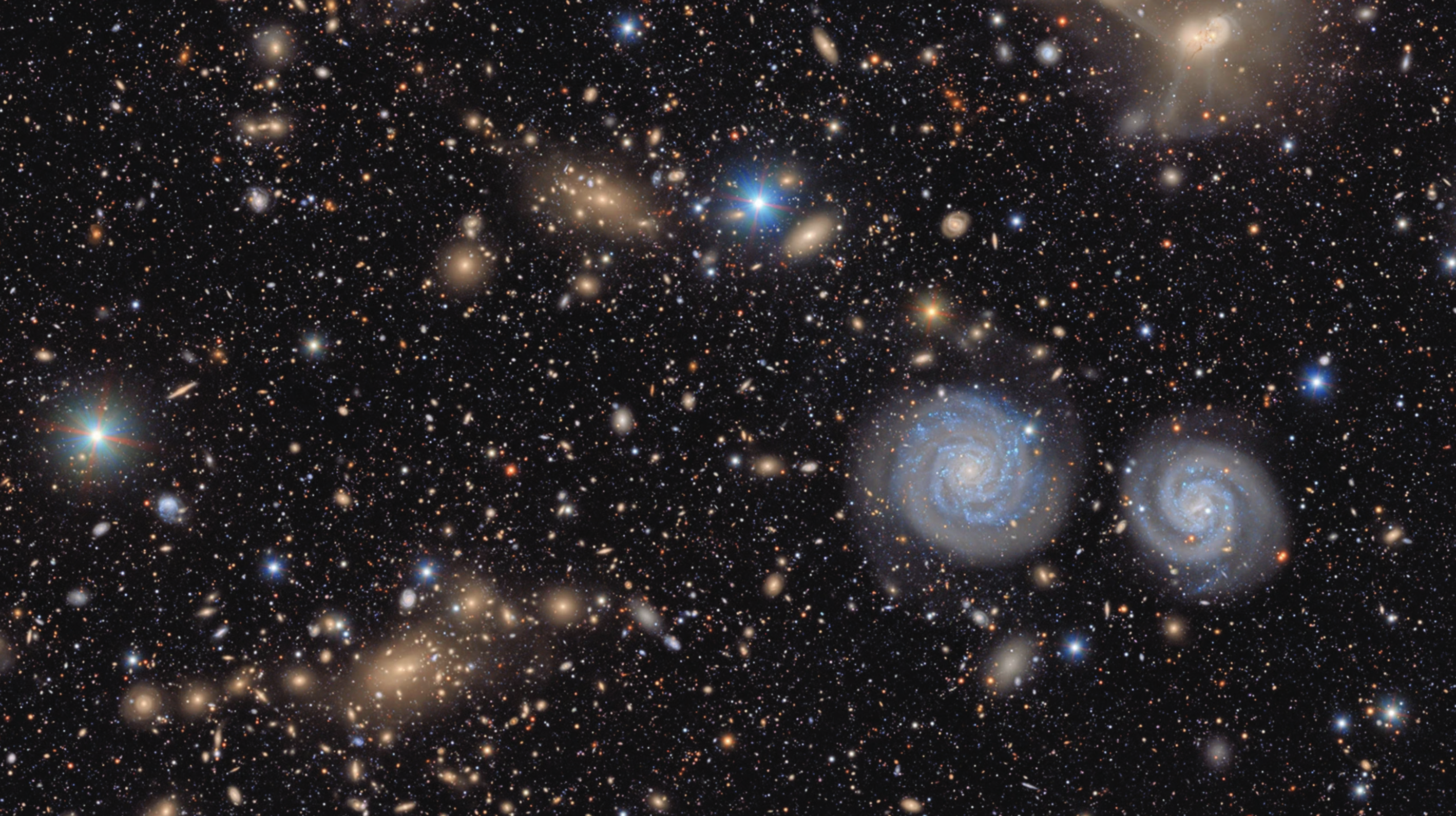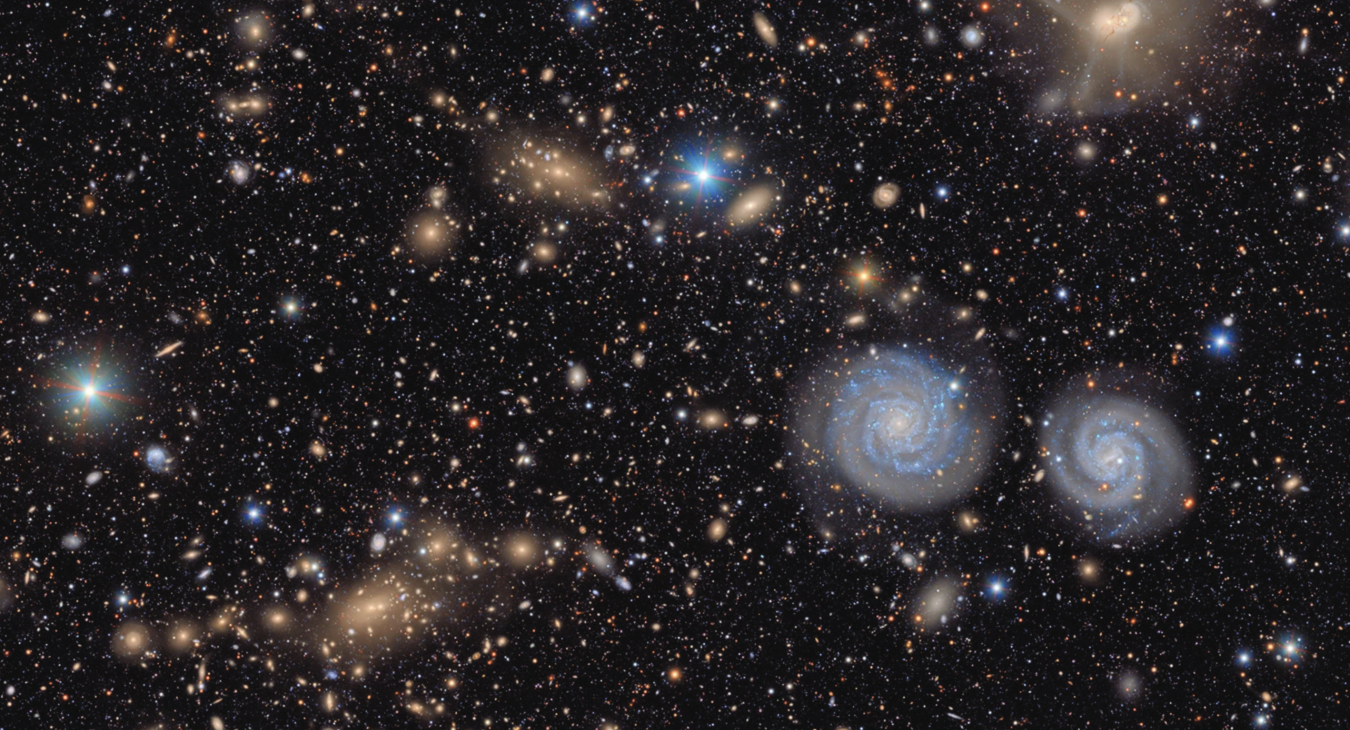Past Novae, Future Revelations
By Alan Hale
Photo above: An early image from the Vera C. Rubin Observatory in Chile was released in June. This image covers part of the nearby cluster of galaxies in the constellation Virgo and shows many foreground stars and background galaxies. PHOTO COURTESY OF NATIONAL SCIENCE FOUNDATION/DEPARTMENT OF ENERGY/VERA C. RUBIN OBSERVATORY
As it was last month, planetary activity in our evening skies throughout August remains fairly low.
Mars sets around the end of dusk throughout the entire month, and although it is not at all difficult to see, it has distinctly faded since it was closer to Earth earlier this year. Saturn, meanwhile, rises in the east at around the same time and is easily viewed throughout the later evening hours and into the morning. It is at its highest above the horizon one to two hours before the beginning of dawn.
The two brightest planets, Venus and Jupiter, will also put on a show during the morning August skies, including a close conjunction between the two of them Tuesday, Aug. 12. Mercury is visible low in the east during dawn beginning around midmonth, which lasts for a couple of weeks. The thin crescent moon passes through this overall gathering on the mornings of Aug. 20 and 21.
The annual Perseid meteor shower peaks the morning of Wednesday, Aug. 13. Ordinarily, the Perseids can produce up to 60 or more meteors per hour. This year, unfortunately, the bright gibbous moon—which was full Aug. 9—will steal part of the show.
Fifty years ago in late August 1975, a bright nova—or exploding star—appeared in the constellation Cygnus, the swan, and briefly appeared about as bright as the North Star, Polaris. There has not been a nova in our skies this bright since then, although dimmer ones have appeared from time to time.
Recently two novae, dimly visible to the unaided eye, appeared—one in the constellation Lupus, west of Scorpius, and the other in the constellation Vela and visible from the southern hemisphere. Both will likely have faded by now.
The Vera C. Rubin Observatory in northern Chile, which has been under construction for the past several years, took its first astronomical images in May, which were released the following month.
Later this year, when it becomes fully operational, Rubin will conduct a 10-year-long Legacy Survey of Space and Time that will examine the entire sky in more depth and detail than ever before, with discoveries that will likely revolutionize much of our understanding of the universe.


